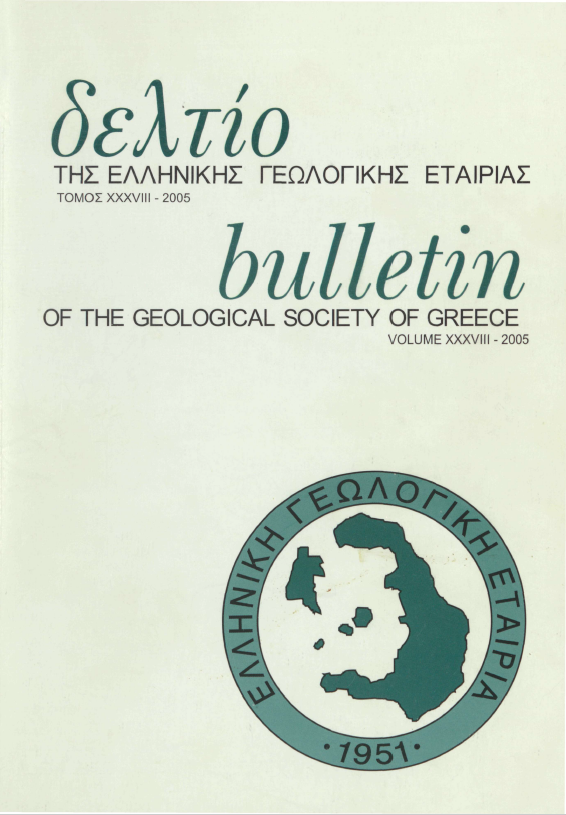MORPHOLOGICAL MAPPING OF THE BOTTOM OF MESOLOGGI LAGOON WITH THE USE OF ASTRONAUT PHOTOGRAPHY AND GIS
Abstract
Mesologi lagoon is a large and shallow environment with intense fish farming applications and the consequent enclosing of very large areas with fish fences and nets, which make field mapping almost impossible. Anthropogenic influence is eminent and a recent and updated morphological map was necessary. A mapping technique is presented based on the use of astronaut photography that is distributed freely by the Internet site of NASA. The digital photograph was geometrically corrected, visually, as semi transparent layer over a scanned map image by the use of PHOTOSHOP software. The areas of known depth were used to classify the depths of the lagoon with the PHOTOSHOP tool "replace color". An image therefore was produce with the depths classified as solid colors. This image was used as base map in MAPINFO, to produce a digital map in GIS environment, where all anthropogenic influence and depths (as depth ranges) are exist as separate layers and reveal the morphological background of the lagoon. The GIS map was used to calculate the water volume of the lagoon and the changes of the volume, as the sea level fluctuates with the tide. The depth-volume diagram was created and shows that during low water (-30cm) the volume is reduced by 43%, in contrast an increase of only 12% when sea level become 30cm higher. This is the result of the construction of peripheral embankments that restricts extension of the lagoon in high water. The implication of this situation is that the water renewal is restricted when sea level is kept high by a barometric low or an onshore wind, in contrast to very good renewal time when sea level is kept low by a barometric high.
Article Details
- How to Cite
-
Αλμπανάκης Κ., Βουβαλίδης Κ., Κόμματα Π., Σπανού Σ., & Ψιλοβίκος Α. (2018). MORPHOLOGICAL MAPPING OF THE BOTTOM OF MESOLOGGI LAGOON WITH THE USE OF ASTRONAUT PHOTOGRAPHY AND GIS. Bulletin of the Geological Society of Greece, 36(2), 950–957. https://doi.org/10.12681/bgsg.16897
- Section
- Marine Geology and Oceanography

This work is licensed under a Creative Commons Attribution-NonCommercial 4.0 International License.
Authors who publish with this journal agree to the following terms:
Authors retain copyright and grant the journal right of first publication with the work simultaneously licensed under a Creative Commons Attribution Non-Commercial License that allows others to share the work with an acknowledgement of the work's authorship and initial publication in this journal.
Authors are able to enter into separate, additional contractual arrangements for the non-exclusive distribution of the journal's published version of the work (e.g. post it to an institutional repository or publish it in a book), with an acknowledgement of its initial publication in this journal. Authors are permitted and encouraged to post their work online (preferably in institutional repositories or on their website) prior to and during the submission process, as it can lead to productive exchanges, as well as earlier and greater citation of published work.






